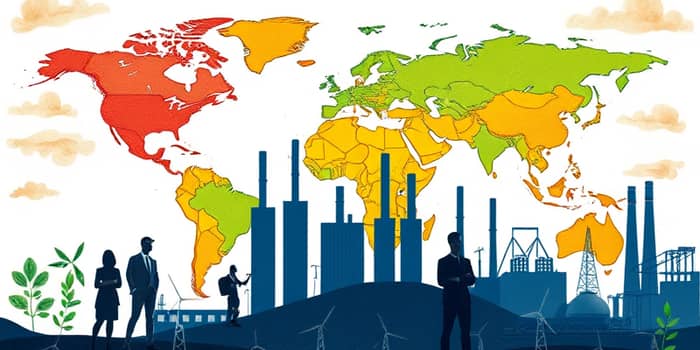
Emerging markets attract global attention as they stride toward unprecedented growth and innovation. For investors, policymakers, and businesses alike, understanding their dynamic nature is key to unlocking potential rewards while navigating uncertainties. This comprehensive update delves into the latest trends, examines inherent risks, and outlines actionable strategies to thrive in developing economies.
Emerging markets represent economies transitioning from developing to developed status, driven by significant industrialization and rapid urbanization. Nations such as China, India, Brazil, and Mexico exemplify this category, showcasing robust demographic shifts and expanding middle classes eager to consume modern goods and services.
These markets often exhibit volatility due to currency fluctuations, commodity price swings, and domestic policy shifts. Yet their long-term trajectory is marked by infrastructure build-out, financial deepening, and integration into global supply chains. Recognizing both their promise and pitfalls enables more informed decision-making for all stakeholders.
Emerging economies are on track for growth of approximately 3.7% in 2025, slightly below the 4% average of the past decade but still outpacing many advanced economies. A surge in China’s technology sector and Brazil’s commodity exports has propelled equity indices higher, demonstrating the higher growth potential compared to developed markets.
However, trade and policy landscapes remain fluid. The recent easing of US–China tariff tensions has alleviated some uncertainty, yet new reciprocal tariffs and shifting trade agreements continue to cast shadows over export-dependent industries.
Investors must confront multiple headwinds, chief among them policy and geopolitical uncertainty. Elections, regulatory overhauls, and diplomatic tensions can abruptly alter market sentiments, leading to capital flight and currency depreciation.
Inflationary pressures persist, with several nations grappling with country-level double-digit inflation rates. Central banks face a delicate balance between tightening monetary policy to contain inflation and supporting growth amid debt vulnerabilities.
Market volatility remains elevated as currencies ebb and flow against the US dollar. For many investors, the specter of abrupt devaluations underscores the importance of hedging and portfolio diversification.
Despite the risks, emerging markets promise unique avenues for growth. Demographic dividends, urbanization waves, and favorable labor costs support long-term expansion prospects. Key sectors such as technology, renewable energy, and consumer goods stand out for their transformative potential.
Strong domestic markets, particularly in India, offer resilience against external shocks. With a burgeoning middle class eager for diverse products and services, consumer-oriented companies can tap into robust demand growth.
Each region presents distinct strengths and vulnerabilities. In China, domestic stimulus has revitalized technology stocks, even as export sectors adjust to incremental US tariffs. India’s stock market has experienced moderate corrections but remains underpinned by robust internal demand supporting resilience.
Brazil and economies across the CEEMEA (Central and Eastern Europe, Middle East, and Africa) region have witnessed improved macroeconomic indicators, bolstered by rising commodity prices and incremental foreign investment inflows. Nonetheless, political changes and fiscal adjustments warrant close monitoring.
Sub-Saharan Africa showcases pockets of rapid growth, driven by natural resource investments and digital leapfrogging in telecommunications. Meanwhile, Southeast Asia continues to benefit from supply-chain diversification as manufacturers seek alternatives to China-centric production.
To navigate emerging market complexities, stakeholders should adopt a multifaceted strategy:
By staying informed through reputable research—such as the International Journal of Emerging Markets and S&P Global PMI surveys—investors can refine their strategies and capitalize on emerging themes.
Emerging markets remain a paradox of tremendous promise and palpable risk. While growth rates may moderate from historical highs, the structural drivers of industrialization, urbanization, and innovation continue to support compelling opportunities.
Successful engagement demands a balanced approach that acknowledges volatility without succumbing to fear. By combining strategic diversification, comprehensive risk assessment, and targeted sector exposure, investors and businesses can harness the potential of developing nations for sustainable long-term returns.
As global economic power shifts, those who master the nuances of emerging markets will be best positioned to shape tomorrow’s investment landscape and contribute to inclusive growth across the world.
References













